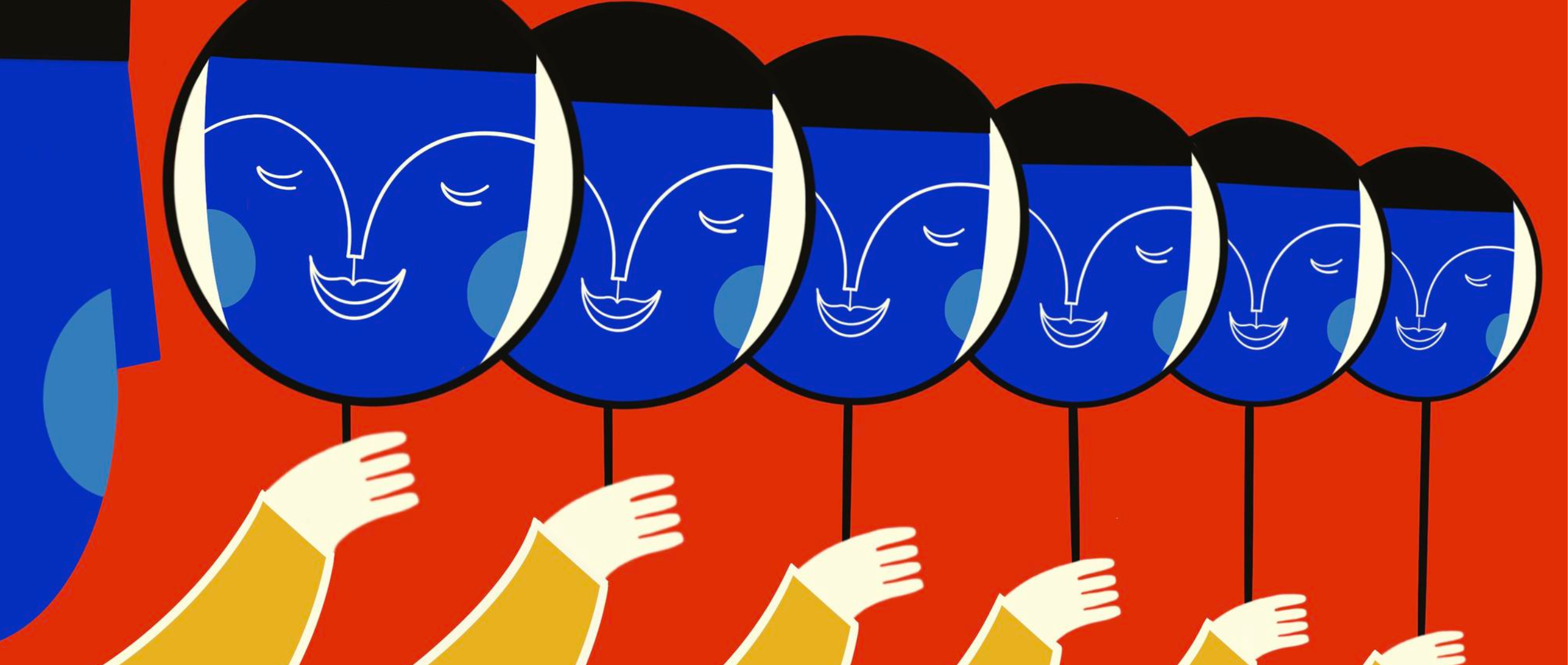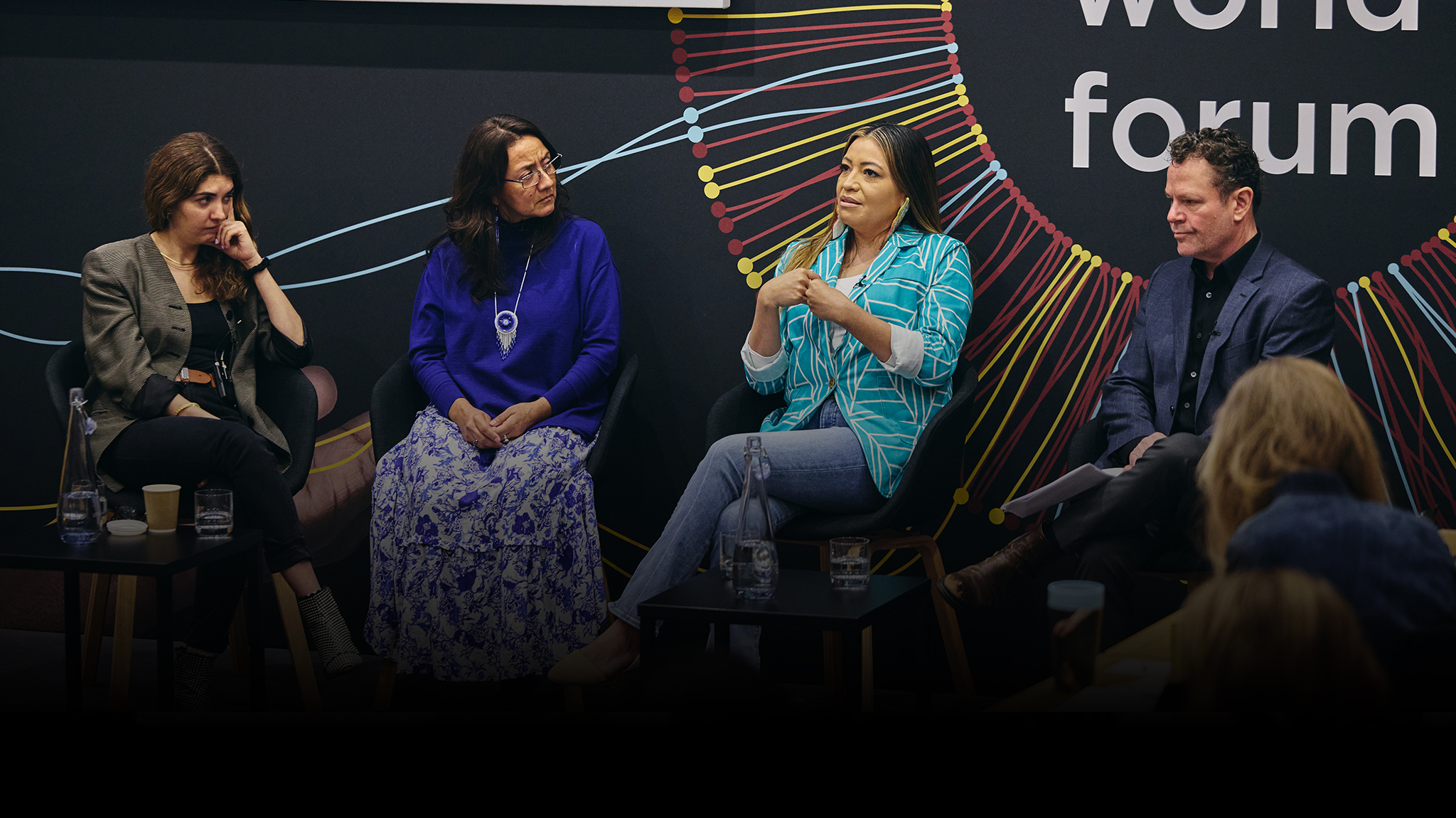Breaking the Chain: Dr. Olajide Williams on Inherited Trauma and Hip Hop as a Tool for Social Change
Edited by Annah Mason
To heal oppressive systems, we must address the cycles of pain and trauma they cause for people and communities across generations. The work of trauma-informed practitioners and innovators helps the social sector to better understand intergenerational trauma and unlock new opportunities for transformational social change.
Physician and educator Dr. Olajide Williams co-founded Hip Hop Public Health with hip hop icon Doug E. Fresh after recognizing the transformative power of hip hop music for improving health outcomes in communities of color. Hip Hop Public Health harnesses the power of hip hop music and culture by creating educational resources that teach children about wellbeing and behavioral health in the U.S. and globally.
In many ways, hip hop music encapsulates the intergenerational joys and trauma of the Black American experience. Now 50 years old, it was born in the 70s-era Bronx from the experimentalism of DJs such as Kool Herc coupled with the creative restlessness of Black and Latino youth. Hip hop is more than entertainment, as noted by iconic artist Chuck D who called it “Black America’s CNN.”
Through decades of systemic inequalities, the over-incarceration of men of color, and the unequal effects of the so-called “War on Drugs,” hip hop emerged as a key lever for surfacing mental health and wellbeing crises. In 1982, Grandmaster Flash and the Furious Five spoke for many disaffected Black and Latino youth by intoning it’s like a jungle sometimes it makes me wonder how I keep from going under. Recent tracks like Logic’s Buried Alive give voice to stress and complex emotions today.
To better understand the trauma being expressed or healed by hip hop culture, we sat down with Dr. Williams and explored the impact of racism across generations. Read our illuminating conversation to learn more about inherited trauma mindsets and how we can start to repair the effects of racism both internally and structurally.
Jimmie Briggs: How can the average person understand intergenerational trauma?
Dr. Olajide Williams: Intergenerational trauma is the psychological effects of trauma on a people that are transferred to subsequent generations. In other words, if your parents or grandparents were murdered in the Holocaust, then the traumatic experience they endured is traumatizing to you. It’s a vicarious, indirect manifestation of trauma that is passed down from one generation to another.
Jimmie: Is it inherited through the assumed attitude of the parent of the grandparent, and you adopt or copy that?
Olajide: It’s a mindset expression of past trauma, and it’s subconscious. You inherit the traumatized mindset of past generations. The traumatized mindset you’ve inherited may limit your aspirations, hamper your dreams, or injure your belief in being treated fairly. It may affect your life choices.
For example, I grew up in Nigeria with a father who had a colonized mindset and believed that white people were superior to Black people. He would say things like, “Look at what Nigerian people have done to this country. Now there’s crime. When we were under the British, there was law and order.” I was predisposed to inheriting my father’s mindset and believing that white people are superior, and if I assimilated those beliefs, it would’ve limited my horizon and self-esteem.
For me, intergenerational trauma amounts to cognitive violence. This cognitive violence is insidious and sustains racist structures directly and indirectly. The victims of this epistemic violence don’t realize they are victims. They view their worth through the prism of their oppressor’s eyes.
Jimmie: How did you escape the colonial trauma mindset of your father?
Olajide: I think it was the fact that I grew up in England and went to elite schools where I was educated with the upper middle classes and the children of British aristocracy. The first few years were challenging for me because I believed there was something wrong with me. But over time, I began to realize that I was just as smart. The formative years define a child’s lifelong self-esteem. I think if you go through formative years and fall into the light of self-awareness, you realize that white folks are not better. If you go through formative years where your self-esteem is crushed, you will struggle with imposter syndrome for many years.
And I think that’s why segregation was so genius. When you segregate groups, especially when they’re young, you can reinforce transgenerational trauma. But integration can break some of that trauma because you begin to realize that you are not inferior. You are just as capable. You realize that the only thing separating people is opportunity and acceptance by a social structure.
Jimmie: As a physician and educator [in New York City], you witness and address the consequences of trauma in the Black American community. How do you view the downstream effects of trauma and damaging mindsets?
Olajide: The Nigerian example is relative, but the African American context is even more severe and acute and brutal from my perspective. How do African Americans escape the residual effects or the residual chains of 400 years of both physical and cognitive domination?
In today’s America, there is pervasive defacto segregation. If you look at the the dissimilarity index, which is calculated by the percentage of people required to move from one place to another to achieve integration, it’s more than 60% in most U.S. cities. The cognitive beliefs and other effects of epistemic violence are perpetuated from generation to generation and concentrated in segregated groups. And that’s one of the reasons the data around internalized racism is frightening. In Harvard’s Implicit Association test, about 50 to 60% of Black people who took that test had internalized racism. They had prejudice against their own skin tone.
Internalized racism is the effect of epistemic violence. It’s the effect of cognitive domination. It’s the chain that Bob Marley was talking about in redemption songs when he talked about emancipating our brains and freeing ourselves from mental slavery. It’s still very much there, an internalized racism that people don’t talk about because it’s subconscious.
Jimmie: Right, you’re talking about the violence we do to ourselves and each other within the Black American community because of internalized racism. Do we know for certain that there is a genetic impact that’s passed down from generation to generation?
Olajide: Yes. We now know that the genome is modified in response to stresses that can alter the expression of a gene. The most common epigenetic modification is what we call DNA methylation. DNA methylation is thought to partially mediate the impact of cultural and socioeconomic and factors on an individual’s health. And some of these genes are involved in immune function, for example. Some of these genes are involved in the risk of high blood pressure.
Jimmie: Can we see differences in the brain imagery of someone who’s Black American—or another disenfranchised population—versus a white American?
Olajide: From a brain perspective, we all have allostatic load, which is the physiological effect of constant or repeated stress. When people are exposed to severe stress, they have an overactive stress response. The “fight or flight” system is being triggered repeatedly and chronically. Your autonomic nervous system goes into overdrive.
When children have adverse experiences and toxic stress while their brain is developing, those brains develop abnormally in areas that are critical to healthy functioning. Adverse childhood experiences and toxic stress are more pervasive among high-poverty communities. And then when you add structural racism, and the interpersonal racism or internalized racism, these additional stresses further increase toxicity to the developing brain. And this puts them at higher risk for hypertension or diabetes when they’re older.
Jimmie: How do we address the problems caused by poverty and structural racism?
Olajide: The good news is we can begin to start solving some of these problems if we address the socioeconomic factors that create them.
Here’s an example. A study looked at brain development in the babies of impoverished mothers and found that brain development was different than in the babies whose mothers were affluent. They randomized the poor mothers to receive a monthly paycheck ranging from $10 up to a few hundred dollars. Then they tracked the brainwaves and development of the babies in the two groups over time.
They found that giving mothers more money to sustain their family’s lives increased the quality of their children’s brainwaves. Their children started developing in more cognitively normal ways than those of mothers not given additional income support. Obviously, we also must also address the epigenetic markers related to racism in addition to structural factors like poverty.
Jimmie: How do the cumulative indignities of structural racism affect the Black community? Especially young boys and men?
Olajide: We’re too focused on the structural. If you listen to some hip hop lyrics and artists, you will hear braggadocio. You will see materialism like designer clothes and big cars. This is driven by a deep sense of insecurity. Insecurity is connected to self-worth and internalized racism.
The way society treated you as a Black man coming up through the projects into hip hop, that internalized racism is expressing itself in this grandiose behavior. It’s a toxic masculinity driven by the Black man’s pain. It’s hard to be a man and have your dignity stripped from you. It’s hard to be a man and who is considered a second-class citizen. It’s hard to be a man and walk into a store with people thinking you’re a criminal. It’s hard to be a man when the world doesn’t respect you.
The experience of the Black American man has caused rage that has disconnected him from the reality of his pain. Until we get back in touch with the reality of that pain, we won’t understand that it’s driven by internalized racism. Unless we address internalized racism, we’ll continue to transmit this intergenerational trauma. We cannot fix structural racism until we fix internalized racism, and we cannot fix internalized racism until we fix structural racism. We must do both to be successful.
This conversation is part of Centered Self, a series of conversations and essays exploring the important but often-overlooked connection between inner well-being and ambitious, effective social change. The series is presented in partnership with The Wellbeing Project, Stanford Social Innovation Review, India Development Review, the Greater Good Science Center, and the Schwab Foundation—sister organization of the World Economic Forum. Contributors to the Centered Self, including researchers, funders, and practitioners from around the world will share strategies, resources, and actionable steps leaders and others working in social change can implement to foster well-being at the individual, organizational, and societal levels.




